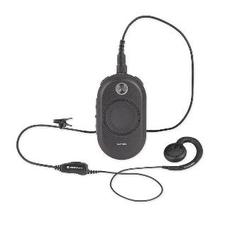Updated March 29, 2021
Each year, as autumn sets in, the air begins to cool, the leaves begin to die, and the night comes early to cast its eerie shadow upon the earth even before the day is done. The world becomes cold, bare and dark.
Then the haunts begin.
From mid-September to the end of October, thousands of haunted houses and spooky amusement attractions, or haunts, open across the country. Some are small, home-grown amusements or events operated by local charities, churches and civic groups. Others are larger, commercial attractions that feature professional performers and slick, high tech shows. Small or large, they all offer one thing in common: a unique experience derived from devious diversions and fun filled frights for those who like to be scared silly or out of their wits, just for kicks.
Some haunts are simple shows with inexpensive props and volunteers dressed in home-made costumes performing improvised scares. Others are high tech, carefully orchestrated events with actors, effects and gadgets to add a touch of virtual reality and heighten the fright. But there is one item nearly all respectable haunts rely on besides the costumes, make-up and fake blood: two way radios.
Good radio communication is very important to haunts for several reasons. The first is safety. Attractions of any sort where patrons gather for entertainment always present safety concerns. Attractions intended to scare those patrons increase them. A situation in which an actor gets assaulted, a patron has a heart attack or gets hurt, something catches fire or some other emergency occurs requires immediate attention, communication and response.
Security is also important. Patrons may become unruly or a fright can get out of hand. Patrons may vandalize sets and props or otherwise take advantage of dark surroundings to engage in other inappropriate activities. Communication is important to ensure property is protected, liabilities are limited and everyone enjoys themselves appropriately.
Third, no matter what, the show must go on. Ensuring actors act on cue, props perform as they should and effects execute on time ensure the haunt itself will have the desired effect and not drop dead during delivery.
Communication can be important or even crucial for other operations as well, such as parking, ticketing, concessions and crowd control. In short, the ability to communicate quickly, efficiently and collectively can make the difference between the overall success or failure of a haunt. To ensure success, two way radios are a practical means to that end.
If you're thinking about creating a haunt or currently operating one, choosing the right two way radio is important to consider. Will your haunt be located indoors or outside? Does it encompass a small or large area? Do you need to communicate with only a few key operators or an entire cast and crew? Will it operate for a just few hours a night or all night and all day? How your haunt is set up and how it will operate will largely determine the type of radios you need. There are several types to consider.
Small lightweight business radios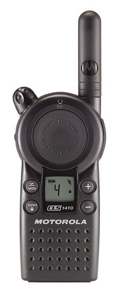
These are generally a prime choice for haunts. Small radios can be hidden more easily in costumes and are lightweight, yet durable. Business class radios also use commercial UHF/VHF frequencies that can be assigned for use specifically for the haunt, ensuring more direct communication between those radio operators and at greater range. Batteries used in business radios typically last longer as well, allowing the radios to be used in haunts with long hours without the need of a recharge. The most popular business class radios for haunts are Motorola CLS1110 and CLS1410 two way radios. They are very small, extremely lightweight radios and have a long battery life. The Kenwood TK-3230DX is also a good choice and is particularly rugged for its size.
900 MHz digital radios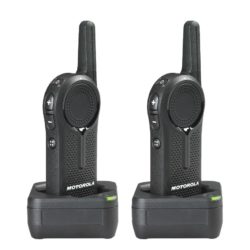
if you are buying all new radios and need them to communicate with your cast and crew on separate, multiple channels, 900 MHz digital radios are an option. The advantages? Radios such as the Motorola DTR600 and DTR700 offer direct, one-to-one calling over multiple channels (30 for the DTR600 and 50 for the DTR700). This allows you to call either an individual radio or an entire group. Motorola also offers the DLR series: the DLR1020 features 2 channels and the DLR1060 has 6 channels.
These radios utilize Frequency Hopping Spread Spectrum (FHSS) technology, offering more privacy and greater security for your haunt attraction than FRS, GMRS and some other UHF/VHF radios. The best part? They are all license free! Since these radios operate at 900 MHz, anyone at any age can operate them for either consumer or business use without the need to purchase a license from the FCC. So, whether you operate a small haunt for charity or a large one for profit, these radios have you covered.
Consumer grade radios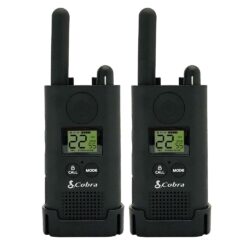
For small, non-commercial haunts on a tight budget such as churches or civic groups, consumer grade radios may be acceptable. These radios are generally small, lightweight, and inexpensive. They usually not as rugged and durable as business class radios, but if they do break they are a lot less expensive to replace. Consumer radios are not intended for private communication. They operate on FRS/GMRS frequencies, which are open, shared channels; the radios will operate fine, but don't be surprised if you receive interference from other area radio users or your conversations are overheard.
Consumer radios also have shorter battery life than most business radios and the range is usually not as good. However, some consumer radios are more durable than others and there are ways to work around some battery issues. If you have limited funds and resources and your haunt is not a large commercial operation, a good consumer radio can still be worth the investment. Radios such as the Midland GXT1000VP4 and the Cobra PX500-BG are a good value at a good price as they include headsets, batteries and charger. The PX500-BG radios are also small, compact and lightweight, allowing you to carry and conceal them easily.
There is one new FRS walkie talkie that is an exception to the "consumer grade" category. This is the Wouxun KG-805F Professional FRS Two Way Radio, and is a great option for haunts that need more rugged durability and battery life without the business radio price. This is because the KG-805F is a business grade radio. Unlike most other FRS radios, the KG-805F is capable of operation on up to 2 watts of power, the maximum for FRS. It is also available in short "stubby" antenna model for low profile operation.
Base stations and intercoms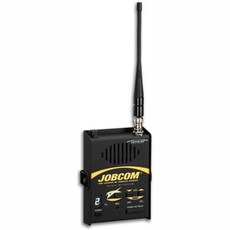
Wireless radio base stations, intercoms or callboxes that are strategically placed throughout the perimeter can provide instant or emergency communications in situations where it may not be economical, practical or even feasible to provide portable handheld two way radios to individual staff members. These intercoms can usually be mounted to a wall or post in central areas or zones and programmed to specific frequencies to talk with other intercoms or two way radios in a group. They can also often be programmed with prepared messages and alerts to act as emergency callboxes. The Ritron Jobcom Base Station/Wireless Intercom is a perfect example of such a device. Larger, permanent attractions and perennial haunts may find this solution to be both desirable and cost effective.
Accessories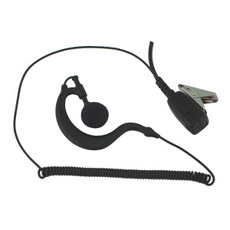
Choosing the right type of radio also includes choosing the right accessories. The type of headsets, mics and other equipment attached to your radios depend largely on your haunt and the effect you want to achieve. Simply operating a radio in your hand in full view of the guests can ruin a good scare and possibly the whole show. Chances are, there will also be a lot of noise and the radio operators on both ends need the ability to both speak and hear clearly above the shrieks, screams and other cacophony.
If your radios need to be hidden but headsets are not that critical, a D-Ring type of earpiece with a PTT mic attached could suffice. Our XLT DR110 D-Ring Earpiece with PTT Mic is a stable, flexible earpiece with a "D" ring that loops around the left or right ear. The earpiece rests against the ear instead of inside it, making the DR110 a good option when sharing an earpiece with several people.
For something a little more discreet, yet easy to wear, an earbud with earclip is an ideal solution. The XLT EB210 Earpiece with PTT Microphone is lightweight, comfortable and features an adjustable height earbud style earpiece to accommodate almost any, er, human ear, left or right. The push-to-talk button/microphone can be clipped onto your lapel or hidden inside your pocket.
If you want the radios to be completely hidden inside or under a costume with no easily discernable wiring, a surveillance earpiece with PTT mic would be the way to go, such as the XLT SE440 2-Wire Surveillance Earpiece with PTT Mic The clear, "surveillance-style" eartube is difficult to see in the dark. It also features a quick release style mushroom tipped surveillance earpiece. The Push-to-talk button/microphone is on a separate wire that can be linked to your lapel, placed in a pocket, or slipped down a sleeve. Think "men in black" and you'll have the idea.
Our Recommendations
For most commercial haunts, the recommended solution is the Motorola CLS1110 or 1410 radio and XLT EB210 earpiece with PTT microphone. For larger haunts, a Ritron Jobcom Base Station/Intercom placed in one or more strategic locations around the haunt is also recommended.
Behind every scary haunt is a scary spook. More often than not, such old fashioned terror is brought to you by modern technology. The next time you visit your favorite haunt, watch out for the ghoul creeping up behind you. Aside from the normal paranormal baggage or props, He, she, or it(?) may just be packing a two way radio.
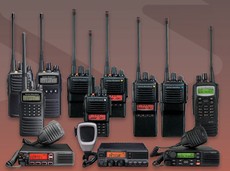 Vertex Standard just launched a new rebate promotion! Purchase at least six Vertex Standard VX-350, VX-420 or VX-2200 Series radios and you qualify for a $20 rebate per radio. Purchase at least six Vertex Standard VX-450, VXD-720 or VXD-7200 Series radios and you qualify for a $40 rebate per radio. This great deal from Vertex is only available until mid-December 2011.
Vertex Standard just launched a new rebate promotion! Purchase at least six Vertex Standard VX-350, VX-420 or VX-2200 Series radios and you qualify for a $20 rebate per radio. Purchase at least six Vertex Standard VX-450, VXD-720 or VXD-7200 Series radios and you qualify for a $40 rebate per radio. This great deal from Vertex is only available until mid-December 2011.




